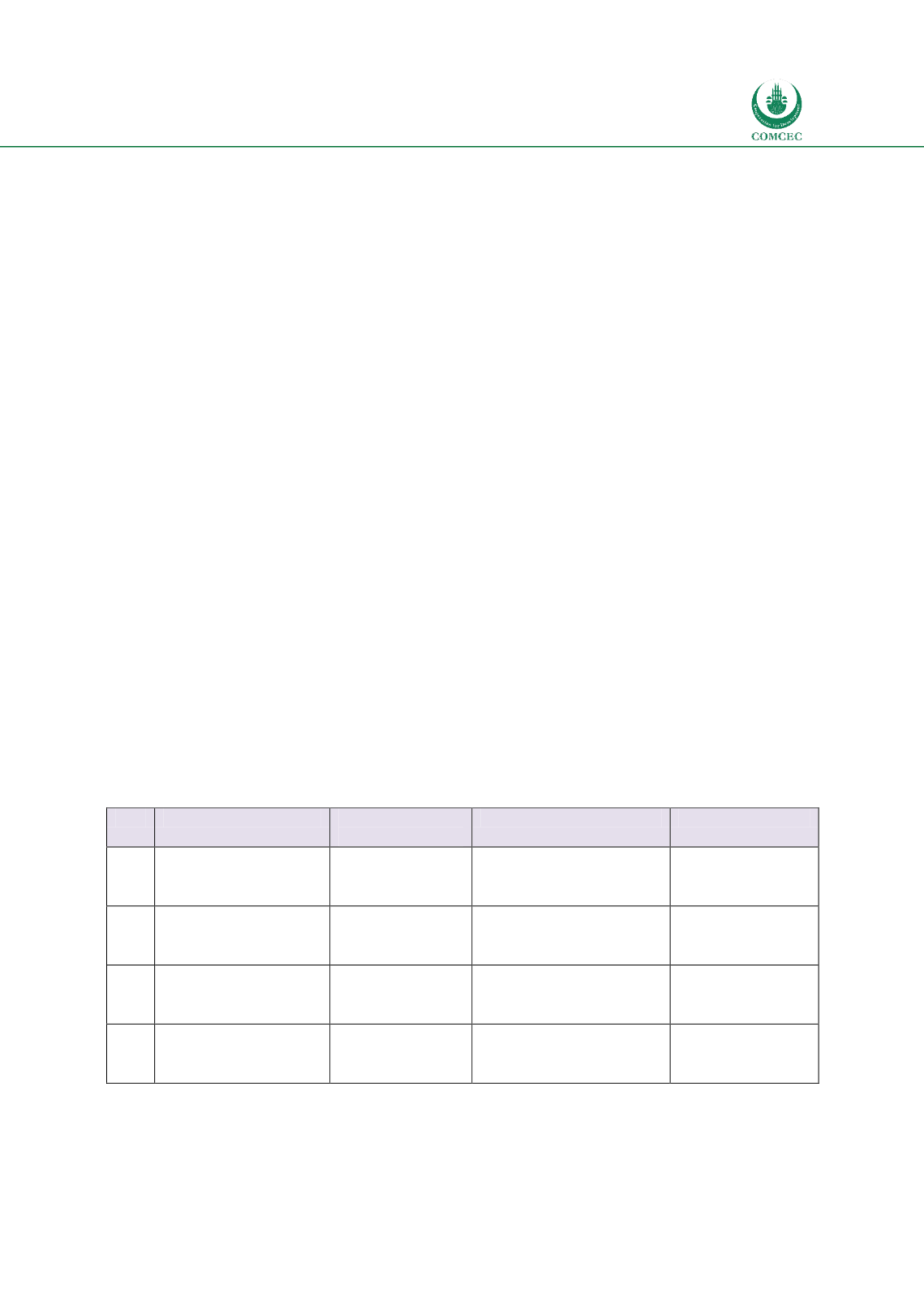

National and Global Islamic Financial Architecture:
Prolems and Possible Solutions for the OIC Member Countries
215
7.2. International Policies and Recommendations
Given that the Islamic financial industry is a relatively new industry, many of its architectural
institutions are evolving in many countries. The industry can benefit from various
international multilateral organizations that have developed standards and models dealing
with different aspects of financial architectural institutions. When a country lacks a specific
standard or code, a suitable strategy would be to develop it using an international bench mark.
Countries can examine these standards and frameworks and adapt them to suit the specific
needs of the local economy and financial systems. The roles that different multilateral
organizations can play in various Islamic financial architectural aspects are discussed below.
7.2.1. Legal Infrastructure
Table 7.8 shows international institutions that can support the development of legal
infrastructure institutions. While the International Islamic Center for Reconciliation and
Commercial Arbitration (IICRCA) provides an alternative dispute resolution and reconciliation
platform to settle cases applying Islamic law for disputes arising in Islamic financial industry,
there are no other international bodies supporting the legal framework. As can be seen in
Table 7.8 an international body that can come up with model laws related to Islamic finance
would help drive the industry forward. In this regard, there are a few examples in conventional
finance that are providing assistance to support a robust legal infrastructure. A good example
is the
Law and Policy Reform Program
of the Asian Development Bank which was launched in
1995 to support member countries through technical assistance projects relating to legal and
judicial reforms and legal empowerment (ADB 2001 and 2016). Among others, this program
publishes knowledge products and provides training related to legal aspects arising in
environmental issues. Similarly, the World Bank has developed principles and guidelines for
creditor rights and insolvency systems that provide, among others, a legal framework for
corporate insolvency (World Bank 2001). Similarly, the United Nations Commission on
International Trade Law prepared the UNCITRAL model law on International Commercial
Arbitration in 1985 that is used by different national arbitration centers globally.
Table
7.8: Legal Infrastructure and Global Institutions
No. Recommendations
Existing
Institutions
Gaps Need to be filled
Implemented by
1.1
Islamic financial laws
Model Islamic financial
laws
IDB (Law &
Legal Policy
Program)
1.2
Supporting Laws for
Islamic
Financial
sector
Model tax laws dealing
with Islamic finance
IDB (Law &
Legal Policy
Program)
1.3
Appropriate dispute
resolution framework
IICRCA
Model law for Islamic
financial arbitration
IDB
(Law
&
Legal
Policy
Program)
1.4
Bankruptcy
Framework
and
Resolution of banks
Model Islamic
bankruptcy laws
IDB (Law &
Legal Policy
Program)
The most appropriate multilateral institution to initiate law and legal policy issues related to
Islamic finance would be the Islamic Development Bank. As one of the strategic goals of IDB is
















